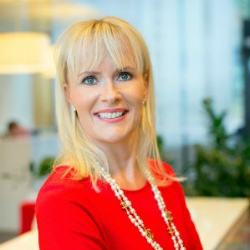
Brushing away the old
Unlike many other multi-national companies Tieto already had a centralised HCM solution. Kravi explained that they used an old version of SuccessFactors that was heavily customised. It was also on-premises. This meant that their historic solution presented a complicated landscape.
One might have thought that by having a centralised solution information would be easy to extract. That was far from the case though. Kravi commented “We had some KPIs, but they were hard to produce. For example: From recruitment, how many people in the pipeline… We had several people working on it each month.”
For the business Kravi explained this meant it was “challenging for the business to forecast the number. There was lots of guessing.” Those same reports are now available at the click of a button. More importantly users are able dive deeper into information and “slice and dice” the data as well.
What were they looking for

The search would focus on finding a solution that offered three key benefits according to Kravi.
The first one, Kravi explained was: “Our employees are consumers, they wanted a consumer like experience.” For Kravi this means that the user interface is simple and personalised. Just as Amazon personalises the experience for shoppers so should HR personalise the experience for employees.
Kravi also expected their next solution to be mobile enabled and require no training. It should be intuitive and friendly for employees to use. Finally Tieto wanted the vendor to have an eye on the future. They should be constantly innovating and demonstrate a future development roadmap.
Tieto started looking for a new system in mid 2014. As a SAP and Oracle partner one assumes that they include those solution in the mix. However by late 2015 they had chosen Workday. They started the formal procurement in March 2016 and the implementation took nine months to complete, going live in January 2017.
Why should implementation take nine months
One of the reasons for this timescale was that Tieto decided to not only purchase the solution but also to become a Workday partner. While Workday carried out the implementation, Tieto shadowed the process with their own consultants learning the Workday processes at the same time. They are now able to offer Workday implementations consultancy from the experience of not just installing it but using it from day to day.
While Tieto was able to shed many of the small applications that it had built onto SuccessFactors they still used other solutions. Workday integrated its solution into Oracle ERP but some apps have not yet been integrated.
In fact this was a very smooth project according to Kravi. One of the few IT projects she has seen keep to both timeline and budgets. For Tieto they took the out of the box solution. Most of the time was spent designing and configuring how it would run and testing it. Testing took quite some time. A tight grip was also kept on scope creep. Kravi said that historically processes had been diverse for each team. With this implementation though only where there was a legal requirement for an alternate process was it implemented.
Was it a perfect project?
Was there anything that Kravi would do differently if asked to do this again? “We probably decided processes from HR perspective. We didn’t include business managers in the process. It is a huge transformation because they needed to give up some of control” said Kravi.
That was a lesson that since the implementation they have corrected, making several changes since launch. They went live with core HR including recruitment. However, they have not yet adopted learning, time management or expenses. Kravi is looking at the forecasting but nothing is yet decided. One got the impression that Tieto is still in the first phase of bedding in.
It will be interesting to see what happens over the next year. Interestingly Tieto has not signed up for benchmarking yet. According to Kravi they see no need. The adoption of benchmarking has not been quick. As more customers sign up, seeing and demonstrating the benefits, it should become a significant competitive advantage for Workday.
What has improved?
For the managers who run the business the information is in a nice packaged form according to Kravi. There is a “huge initial benefit to having it in real time.” She added that there are also practical advantages. For example, if a manager wants to know about an employees compensation or an increase the answer is at their fingertips.
For the business as a whole, there is one definite tangible benefit. Kravi said: “We are in the business of digitalisation, it is very resource dependant. We now have the resource pipeline in a better shape.”
This is crucial for a professional services organisation and should help the profitability of the company in the long term.
It is still early days still and Tieto are still materialising all the benefits of visibility. There is more configuration and coaching to complete. Kravi also wants everyone to have the right dashboard for their role. They are looking to develop the implementation beyond its original scope. Tieto is starting to look at cross database analytics.
Lessons learnt
For anyone approaching a similar project Kravi was clear in her message to HR leaders. “Encourage them to take ownership of the project. It’s not an IT project. They need to have a view of how to run HR in the future, and they need to be closely involved in the future. They have to be able to lead that transformation to have a relatively good understanding of the opportunity.”
She continued: “Have it resourced properly and after go live, put support models in place.”
She added that her HR team has evolved. The role of the HR business partners is changing. Suddenly managers are doing their own HR supported by the software. Depending on their capability, HR business partners are put on different business projects or something else. There is a new need for analytics skills, for visualisation and storytelling. HR’s role is changing.
So what would Kravi do differently? She summarised saying: “Much more managers into design phase. Start to resource support and analytics teams earlier, begin change management in HR roles earlier.”
She added that they could have communicated more on how managers were expected to run their HR functions. It was not that additional training was required as the system is so intuitive, but more than they weren’t aware of what they were now expected to do themselves.
What does it mean?
Even though Tieto only implemented the HR solution it is clear that this is a cross functional project. Kravi wishes that she had involved more managers from the business in the project. This move towards integrating functions is being seen in many organisations. Some are adopting methodologies such as bizops and Agile working. Workday themselves are looking to support teams alongside more traditional organisational models.
There are always lessons that companies can learn from implementations, even where the project went well. This one did so, but it could still have gone better. Kravi has put Tieto in a good position to ensure that the company is in a good place to leverage Workday for benefit of its people which in turn will benefit its customers.


























